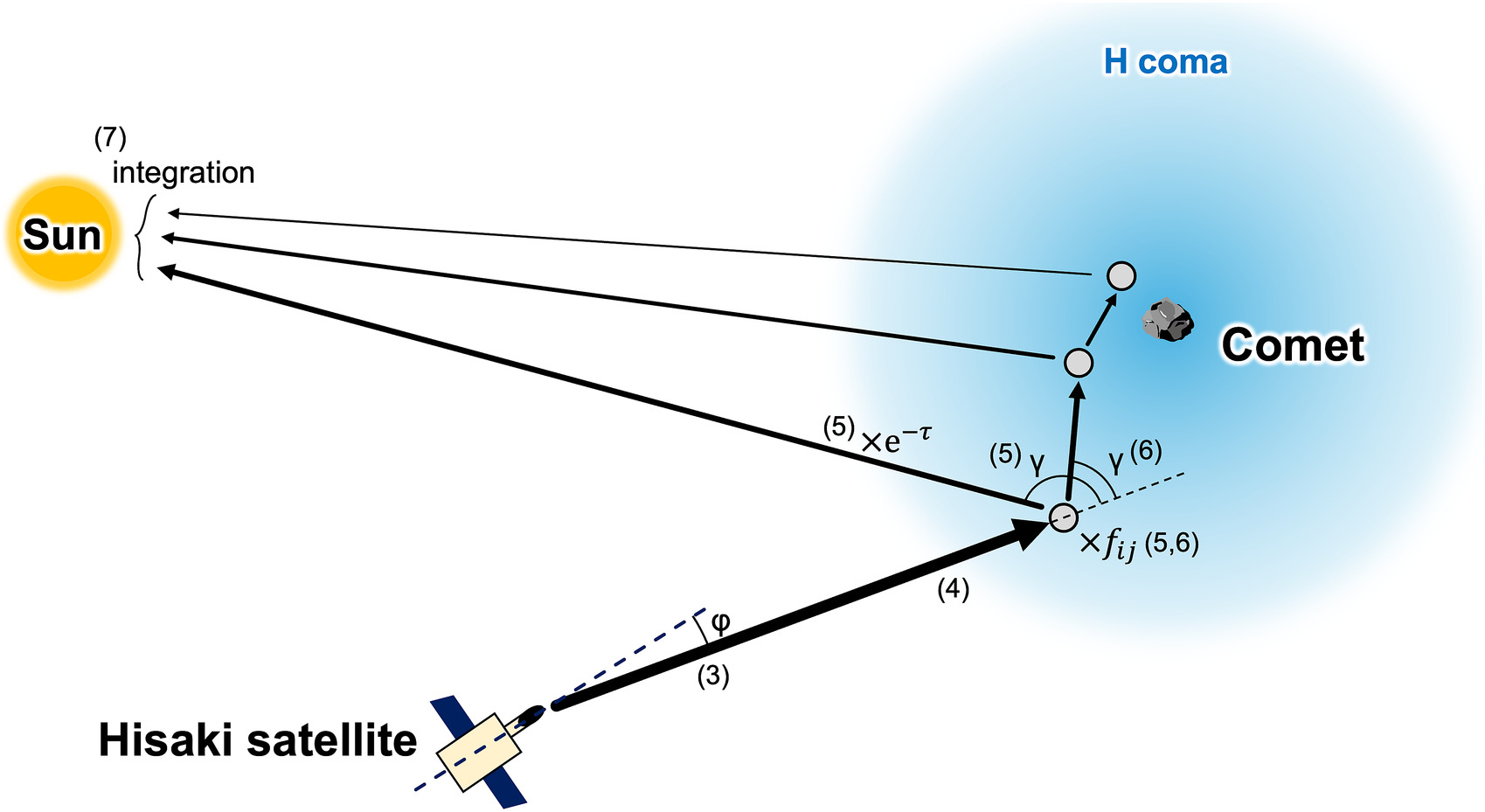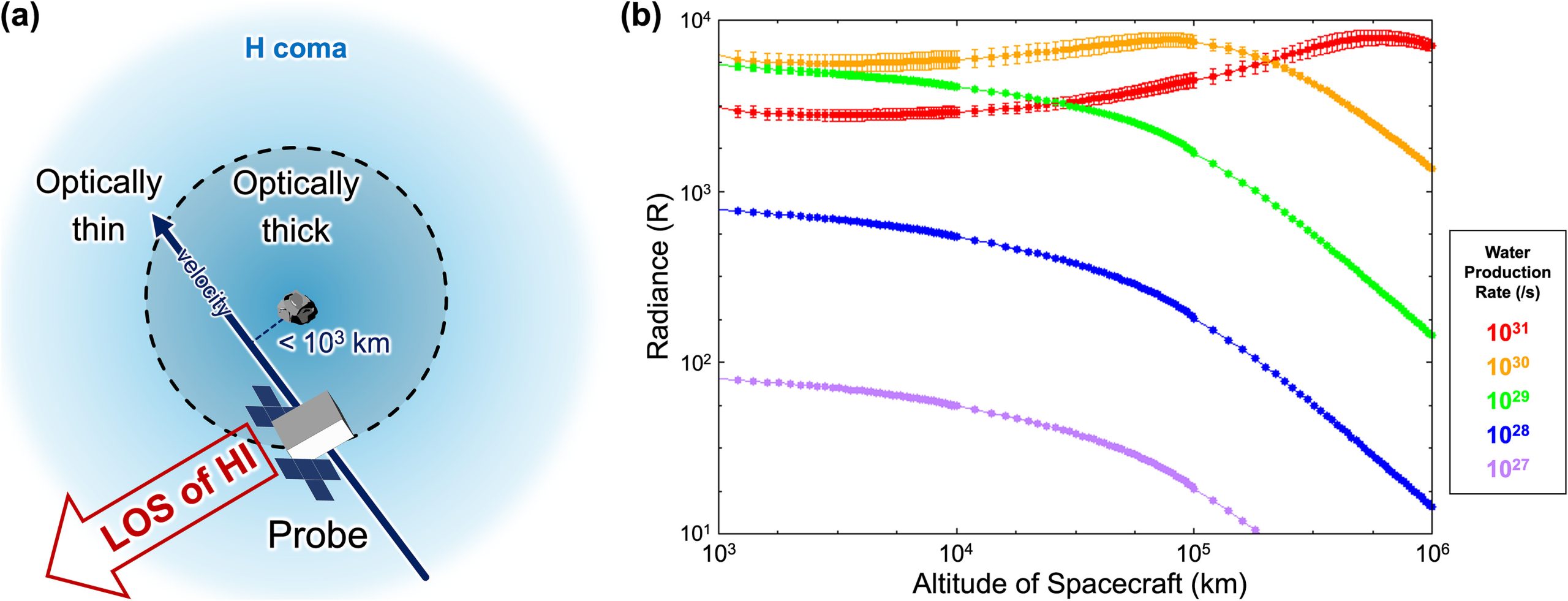A research paper on comets by a graduate of our laboratory has been published!
A research paper on hydrogen originating from comets, authored by Dr. Yudai Suzuki (a 2022 graduate of the Kazuo Yoshioka Laboratory, currently a postdoctoral researcher at ISAS/JAXA), Associate Professor Kazuo Yoshioka, Professor Ichiro Yoshikawa, and others, has been published. Comets are considered one of the potential sources of Earth’s water, and understanding them is essential for unraveling the history of terrestrial evolution. Water is released from the nuclei of comets, and observing the hydrogen produced through its dissociation is a valuable method for understanding cometary activity.
In this study, Dr. Suzuki developed a radiative transfer model of ultraviolet emissions from hydrogen that includes the physical process of “multiple scattering.” He demonstrated that the model successfully reproduces the comet observations made by the ultraviolet space telescope Hisaki, developed primarily by the Yoshioka and Yoshikawa laboratories. The study also used this model to evaluate the observational capabilities of the hydrogen detector onboard the upcoming Comet Interceptor mission, which the Yoshioka Laboratory is leading.
[Paper Information]
Y. Suzuki, K. Yoshioka, K. Masunaga, H. Kawakita, Y. Shinnaka, G. Murakami, T. Kimura, F. Tsuchiya, A. Yamazaki, I. Yoshikawa. 2025. Contribution of multiple scattering to the Lyman alpha radiance distribution in cometary comae. Icarus, 441, 116720. doi: 10.1016/j.icarus.2025.116720


